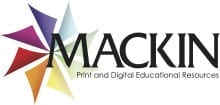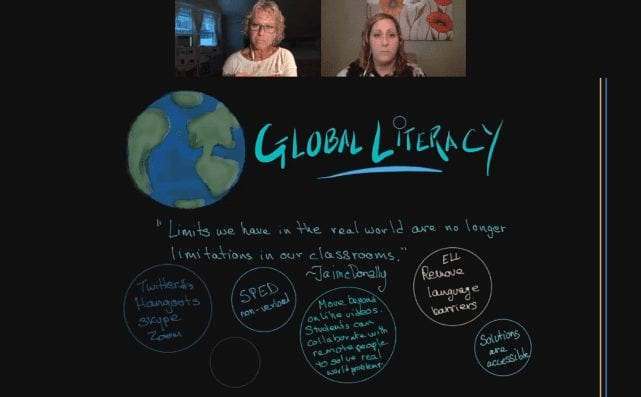Immersive Technology: Asset or Fad?
Augmented reality, virtual reality, mixed reality—can immersive technology really benefit students and their learning, or are these just tech fads? In their recent edWebinar, Jaime Donally, Author, Speaker, and Edtech Consultant, and Michelle Luhtala, Library Department Chair at New Canaan High School in Connecticut, explained that although these technologies aren’t the answer to everything, they are transforming learning and will continue to do so going forward. In addition, while the thought of using these tools can be exciting, schools need to first plan for successful integration into the classroom and curriculum.
First, Donally and Luhtala started by distinguishing the three types of immersive technology. Augmented reality takes a view of the real world and enhances it with something digital, while virtual reality is a completely digital experience with no views of the real world. Donally added that having a viewer isn’t always necessary to experience virtual reality; a device on its own can be used too. Last, mixed reality combines augmented and virtual reality, having digital objects interact with objects in a view of the real world. When it comes down to it, Donally noted, it’s not as important to know what experience equals what kind of immersive technology, just that immersive technology is taking place and taking strides to be more functional for learning.
Students are using immersive technology to collaborate with each other in ways that are no longer limited by geographic areas or language barriers. In addition to improved collaboration, these tools can help build empathy. Students can experience anything from being in the position of an individual with autism or right in the middle of a hurricane. Schools can even use immersive technology for enhanced safety training and emergency preparedness. And looking towards the future, immersive technology is paving the way for learning in completely virtual classrooms. “360 environments are our future. We don’t live in this little box, we live in a 360 world. The way that we want to interact with people should be the way we interact normally without that technology. We’re seeing a transition into something that feels more realistic in that way” said Donally.
When thinking about how this technology can transform learning, redefinition becomes especially apparent. These tools can put users ahead of what they’re normally capable of allowing students to experience things that would be impossible in real life, for example, taking a walk on the moon. Also, as they are given more opportunities to use this technology for their own content creation, students will take more ownership of their learning leading to further transformed learning.
While these tools have the ability to transform learning, that doesn’t necessarily mean that the success of the integration of that specific tool can be assessed. Any tools should be supplementary as opposed to making up the entire learning experience, so there are measurable things that can be tied into that. That growth can be evaluated over time as students take more ownership of their learning. Luhtala added that one measure of this could come from interviews asking students how the technology is changing their feelings about their learning or abilities.
So, what do schools need to get started on integrating immersive technology into classrooms? First and foremost, talk to everyone about the implementation. This includes the curriculum department, technology department, and administrators and coaches. Make sure everyone has a common goal and understands the issues that need to be addressed with students, and that the technology used is driven by the curriculum, not the other way around. Understand the school’s needs and as well as limitations before the planning process. Bottom line—don’t let the excitement for the initiative overpower getting started properly. When it comes to the point of implementation, the integration will be solid keeping any stakeholders more likely to stay on board.
This edWeb broadcast was sponsored by Mackin Educational Resources.
This article was modified and published by eSchool News and EdScoop.
About the Presenters
Michelle Luhtala is the Library Department Chair at New Canaan High School in Connecticut and was one of five school librarians named as a “Mover and Shaker” by Library Journal in 2015. She is the winner of the 2011 “I Love My Librarian” Award and the Library Association’s 2010 Outstanding Librarian Award. The New Canaan High School Library won AASL’s National School Library Program of the year in 2010. Follow her on Twitter @mluhtala.
Jaime Donally is a passionate technology enthusiast. She began her career as a math teacher and later moved into instructional technology. Her desire to build relationships has brought about opportunities to collaborate with students and educators around the world. She provides staff development and training on immersive technology as an edtech consultant.
Her latest adventures include the launch of Global Maker Day and the #ARVRinEDU community. She works as an author and speaker to provide practical use of augmented and virtual reality with more resources at ARVRinEDU.com.
Join the Community
Emerging Tech for Schools and Libraries is a free professional learning community on edWeb.net where school librarians, teachers, and administrators can explore all the ways to integrate technology and 21st century learning into school library programs.






Comments are closed.